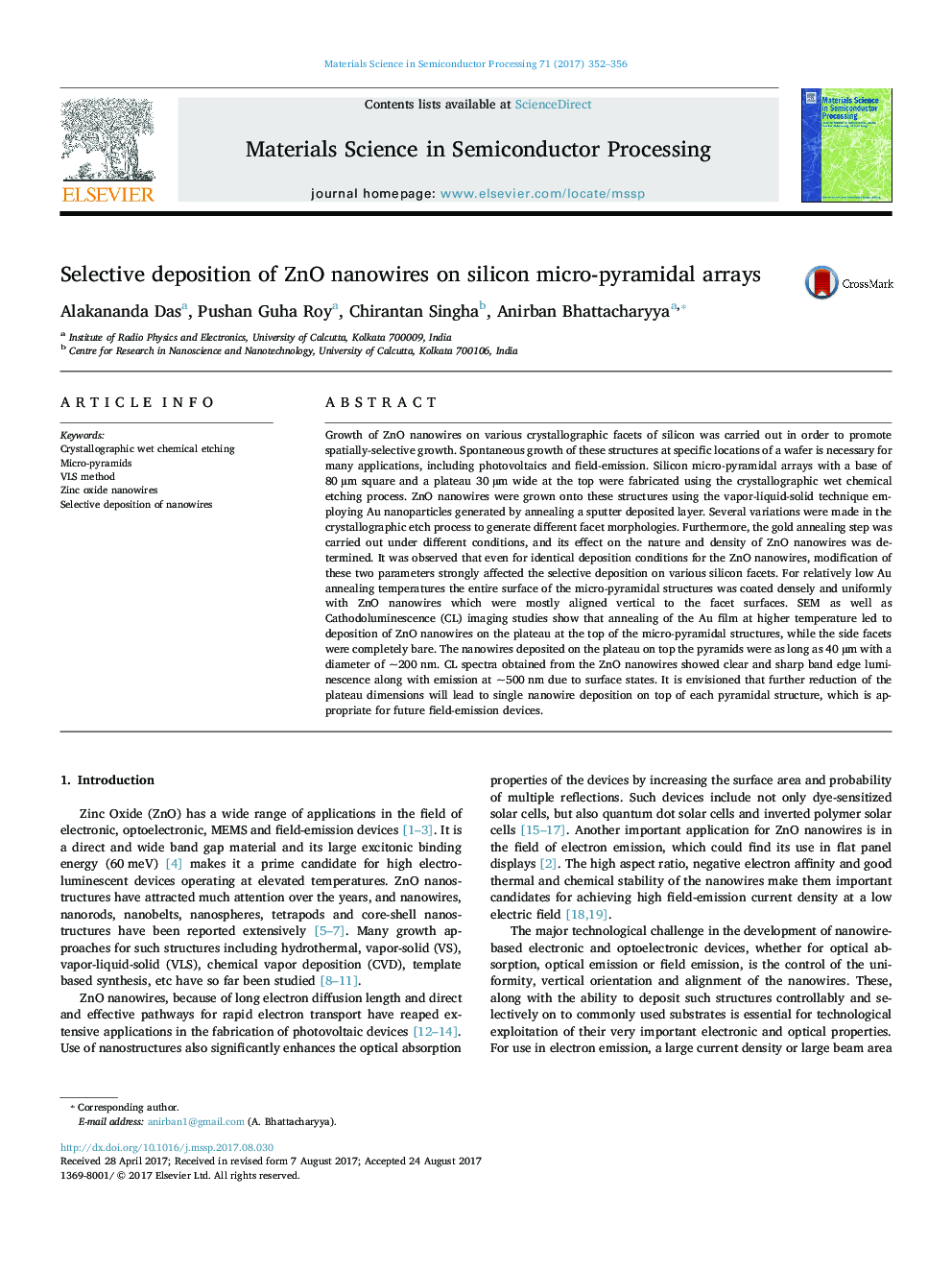| Article ID | Journal | Published Year | Pages | File Type |
|---|---|---|---|---|
| 5005845 | Materials Science in Semiconductor Processing | 2017 | 5 Pages |
Abstract
Growth of ZnO nanowires on various crystallographic facets of silicon was carried out in order to promote spatially-selective growth. Spontaneous growth of these structures at specific locations of a wafer is necessary for many applications, including photovoltaics and field-emission. Silicon micro-pyramidal arrays with a base of 80 µm square and a plateau 30 µm wide at the top were fabricated using the crystallographic wet chemical etching process. ZnO nanowires were grown onto these structures using the vapor-liquid-solid technique employing Au nanoparticles generated by annealing a sputter deposited layer. Several variations were made in the crystallographic etch process to generate different facet morphologies. Furthermore, the gold annealing step was carried out under different conditions, and its effect on the nature and density of ZnO nanowires was determined. It was observed that even for identical deposition conditions for the ZnO nanowires, modification of these two parameters strongly affected the selective deposition on various silicon facets. For relatively low Au annealing temperatures the entire surface of the micro-pyramidal structures was coated densely and uniformly with ZnO nanowires which were mostly aligned vertical to the facet surfaces. SEM as well as Cathodoluminescence (CL) imaging studies show that annealing of the Au film at higher temperature led to deposition of ZnO nanowires on the plateau at the top of the micro-pyramidal structures, while the side facets were completely bare. The nanowires deposited on the plateau on top the pyramids were as long as 40 µm with a diameter of ~200 nm. CL spectra obtained from the ZnO nanowires showed clear and sharp band edge luminescence along with emission at ~500 nm due to surface states. It is envisioned that further reduction of the plateau dimensions will lead to single nanowire deposition on top of each pyramidal structure, which is appropriate for future field-emission devices.
Keywords
Related Topics
Physical Sciences and Engineering
Engineering
Electrical and Electronic Engineering
Authors
Alakananda Das, Pushan Guha Roy, Chirantan Singha, Anirban Bhattacharyya,
